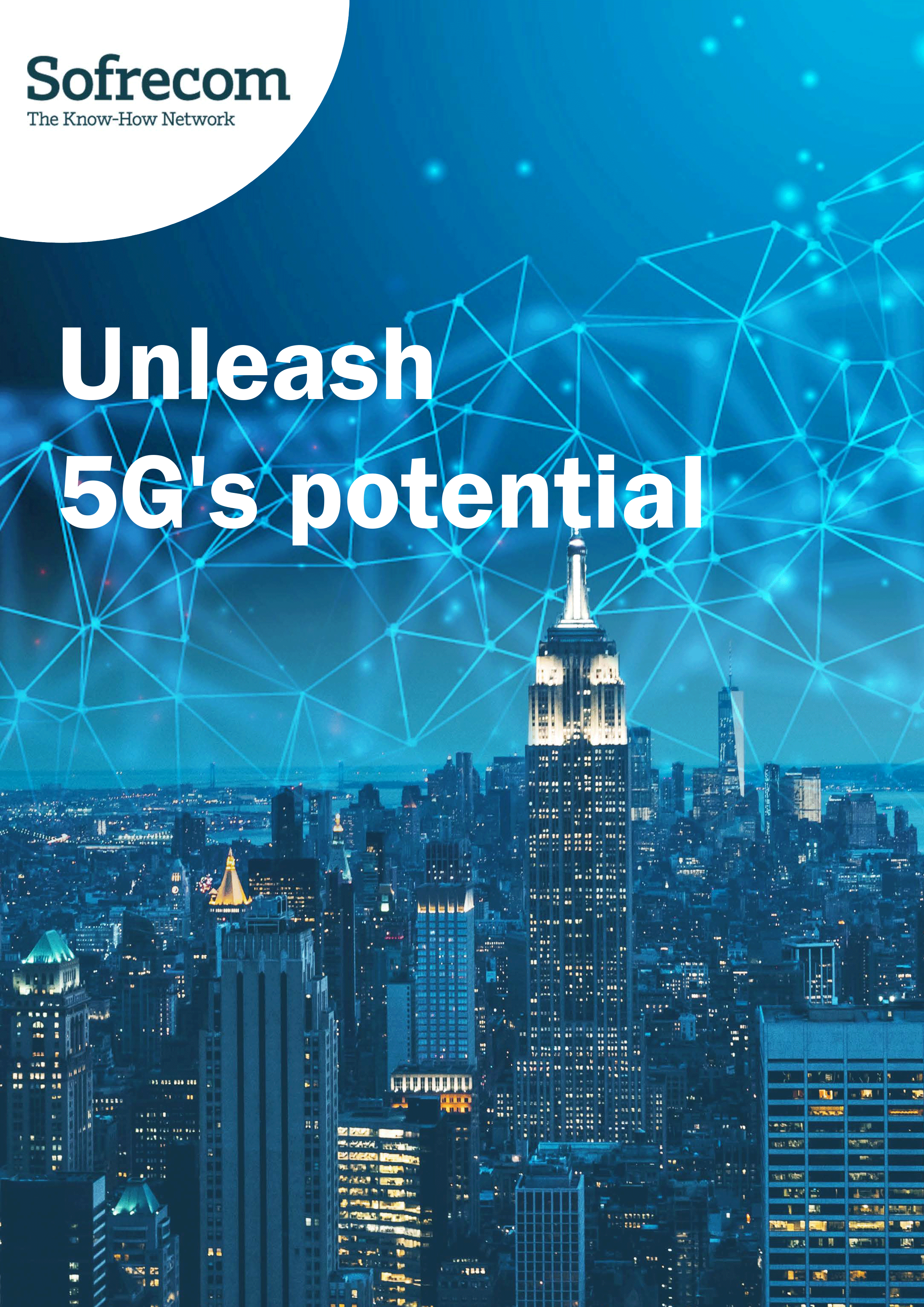
Through continuous innovation and collaboration, we will be able to bridge the gap and ensure that the benefits of 5G SA are realized, thereby ushering in a new era of secure and unprecedented connectivity and digital experiences.
Mai Phuong Bui, Strategic Marketing Consultant

Concerning the consumer market, the development of 5G SA is not currently a significant factor. Most applications can function adequately on 4G and 5G NSA networks. It is unlikely that consumers will notice a discernible difference between the current 5G NSA and 5G SA. As users primarily engage in activities such as streaming and social media, which are already exceptionally fast, the need for 5G SA is still limited. Therefore, the deployment of 5G SA in the B2B and B2C sectors raises questions about its implementation, its potential implications and mostly its business model.
5G standalone (SA) technology has emerged as a game-changer in the world of telecommunications, offering unparalleled speed, ultra-low latency, and massive device connectivity. While the benefits of 5G SA are widely recognized, its impact has been more pronounced in the business-to-business (B2B) realm compared to the business-to-consumer (B2C) market. In this article, we delve into the advantages of 5G SA in B2B settings and discuss the challenges it faces in gaining widespread adoption in the B2C consumer market.
Prior to delving into the benefits of 5G Standalone, it is crucial to grasp the importance of distinguishing it from its predecessor, 5G non-standalone (NSA). Here, we provide an explanation of both technologies and highlight the differences between them:
5G Non-Standalone (NSA) is the initial deployment of 5G technology that relies on the existing 4G infrastructure. It uses 4G as the anchor for control functions while introducing 5G for data transmission. In this architecture, the 5G network primarily focuses on enhancing data speeds and capacity, while relying on 4G for signalling and control purposes. This approach allows for a faster rollout of 5G by leveraging existing infrastructure. However, the concept of non-standalone deployment is still in its early stages, with widespread implementation yet to be achieved.
5G Standalone (SA), on the other hand, represents a more advanced and independent form of 5G technology. Unlike NSA, SA does not rely on the presence of 4G infrastructure for its operations. It is designed from the ground up to deliver the full suite of 5G capabilities, including high speeds, low latency, massive device connectivity, and advanced network slicing. SA networks have their own signaling and control functions, making them self-sufficient and capable of providing a truly transformative 5G experience.
NSA was introduced as an intermediate step towards the deployment of 5G, allowing for a quicker rollout by leveraging existing infrastructure. In contrast, SA represents the long-term vision for 5G, requiring new infrastructure to be built. As a result, SA may have a slower adoption rate initially but offers a more robust and future-proof foundation for 5G networks.
Amplifying Business Efficiency
The lightning-fast speeds and ultra-low latency of 5G SA have proven to be a boon for businesses. B2B industries such as manufacturing, logistics, and healthcare can leverage this technology to optimize their operations, improve productivity, and enable real-time decision-making. We explore how 5G SA facilitates seamless machine-to-machine communication, enhances supply chain management, and drives innovation in industrial automation.
Enabling Smart Cities and Infrastructure
The massive device connectivity capabilities of 5G SA play a pivotal role in building smart cities and infrastructure. B2B applications, such as smart grid management, intelligent transportation systems, and remote monitoring, benefit immensely from the ability to connect and manage a vast number of devices simultaneously. We discuss how 5G SA empowers B2B sectors to create sustainable, efficient, and interconnected urban environments.
Transforming the Healthcare Landscape
In the B2B sphere, the healthcare industry has witnessed significant advancements with 5G SA. From remote surgeries and telemedicine to connected medical devices and real-time patient monitoring, this technology revolutionizes healthcare delivery. We delve into the advantages of 5G SA in B2B healthcare applications, highlighting improved patient outcomes, enhanced diagnostics, and the potential for personalized medicine.
The B2C Consumer Market Challenge
While the advantages of 5G SA in B2B settings are evident, its impact on the B2C consumer market is yet to fully materialize. The consumer market has different dynamics and demands compared to the B2B. We examine the challenges that hinder the widespread adoption of 5G SA in the B2C realm, including limited device availability, high costs, and the need for infrastructure upgrades. However, we also discuss the potential future benefits for consumers, such as immersive entertainment experiences, augmented reality and metaverse applications.
Many SA deployments in perspective, but few fixed deadlines were communicated. 5G SA deployments (2022-2023) are mixed bag: major operators in APAC, Europe, Middle East and North America are rolling out and have launched at scale, while other top players in the same regions have delayed launches:
- Notable 5G SA launches have taken place over the past 6 months, including NTT Docomo in Japan and Claro (América Móvil), TIM Brasil (Telecom Italia) and Vivo (Telefónica) in Brazil.
- Other operators that officially launched SA networks in 2021 extended their coverage in the first half of 2022 (Vodafone Germany).
- Several major deployments of 5G SA are experiencing delays (Telefonica in Germany and Spain, SKT in South Korea, KDDI in Japan, etc.).
Therefore, 2023 is not the year of mass deployment, and it will be the same for 2024 and 2025. Indeed, between 2022 and 2025, stations supporting 5G SA will represent 24% of all 5G networks. This figure will increase to 53% between 2026 and 2028, however, it is only during this period that most 5G sites will support SA.1
5G SA not only has an availability issue, but it also has a branding issue: We see more ways to name the new network: 5G+, Ultra Capacity 5G, true 5G, true 5G, Lightning Speed 5G, or simply "5G" and in this case 5G NSA called 5G DSS (low band). The slow adoption of 5G SA makes its communication a challenging subject. At this stage, 5G SA, in terms of coverage and applications, is generally not mature enough. However, some operators in Asia and in US deliver strong messages at the launch of the commercialization about the advantages of 5G SA but they are not able to detail or provide sufficient evidence of the upgrading network.
Future Outlook and Bridging the Gap
In the final section, we analyze the future outlook for 5G SA in both B2B and B2C markets. We explore the strategies that can bridge the gap between the two sectors, such as developing consumer-friendly applications and devices, fostering collaborations between network providers and consumer-focused industries, and addressing cost and infrastructure challenges. By understanding the unique needs of the B2C market, we can unlock the true potential of 5G SA for consumer applications.
While 5G SA has made significant strides in transforming the B2B sectors, it still faces challenges in gaining widespread adoption in the B2C consumer market. The advantages of 5G SA in B2B settings, including amplified business efficiency, smart cities, and healthcare advancements, are evident. However, addressing the unique demands of the B2C market, such as device availability and affordability, is crucial for unlocking the full potential of 5G SA for consumers. Through continuous innovation and collaboration, we will be able to bridge the gap and ensure that the benefits of 5G SA are realized, thereby ushering in a new era of secure and unprecedented connectivity and digital experiences.
1Analysys Mason’s survey of 60 mobile and converged operators worldwide (conducted in 2Q 2022)





